The best TVs for sport for all budgets
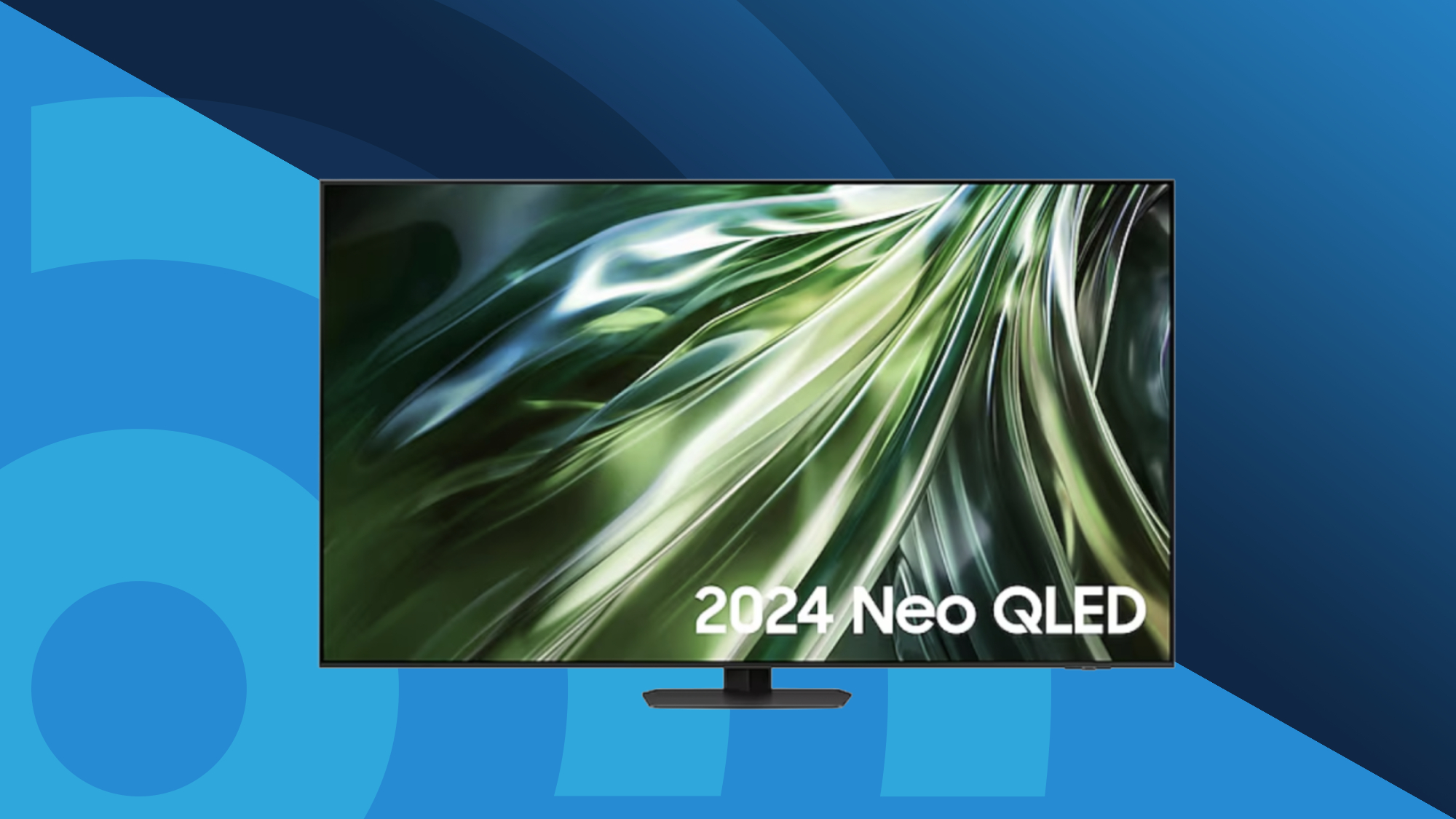
The best TVs for sport combine an excellent picture, a great design and good value for money. If you're buying a TV you'll primarily be using to watch sporting events, whether that’s football games, racing, athletics or anything else, there are several important things you'll need to consider.
In this list, you'll see that the best TVs for sport aren't all the most high-end, premium displays from our best TVs guide. That's because your prime consideration should be motion. Whether you enjoy watching football (either type), baseball, cricket or curling, on-screen images are constantly moving, which means that the more detail you can see when there’s motion, the better. Otherwise you’ll be watching lots of blurs dart across the screen.
Some TVs are better at scanning the picture and adding detail back into blurred motion than others. But it's not solely about the motion control, you should also consider brightness and reflections.
If you’re watching sport during the day, you’ll also need to make sure you can see what's going on. For that, you’ll need a bright TV that can cut through any reflections from natural light. Some TVs that are fantastic for watching movies – especially cheaper OLED TVs – are at their best when you can control the level of lighting, but we'll assume that with sports, you won't always want to do that.
Below you'll find our selection of the best TVs for sports. We’ve reviewed many of the best TVs over the years, so we know what to look for when it comes to TVs designed for watching sports that can handle all-important motion and reflections well.
The best TVs for sport you can buy
Why you can trust TechRadar
The best TV for sport overall
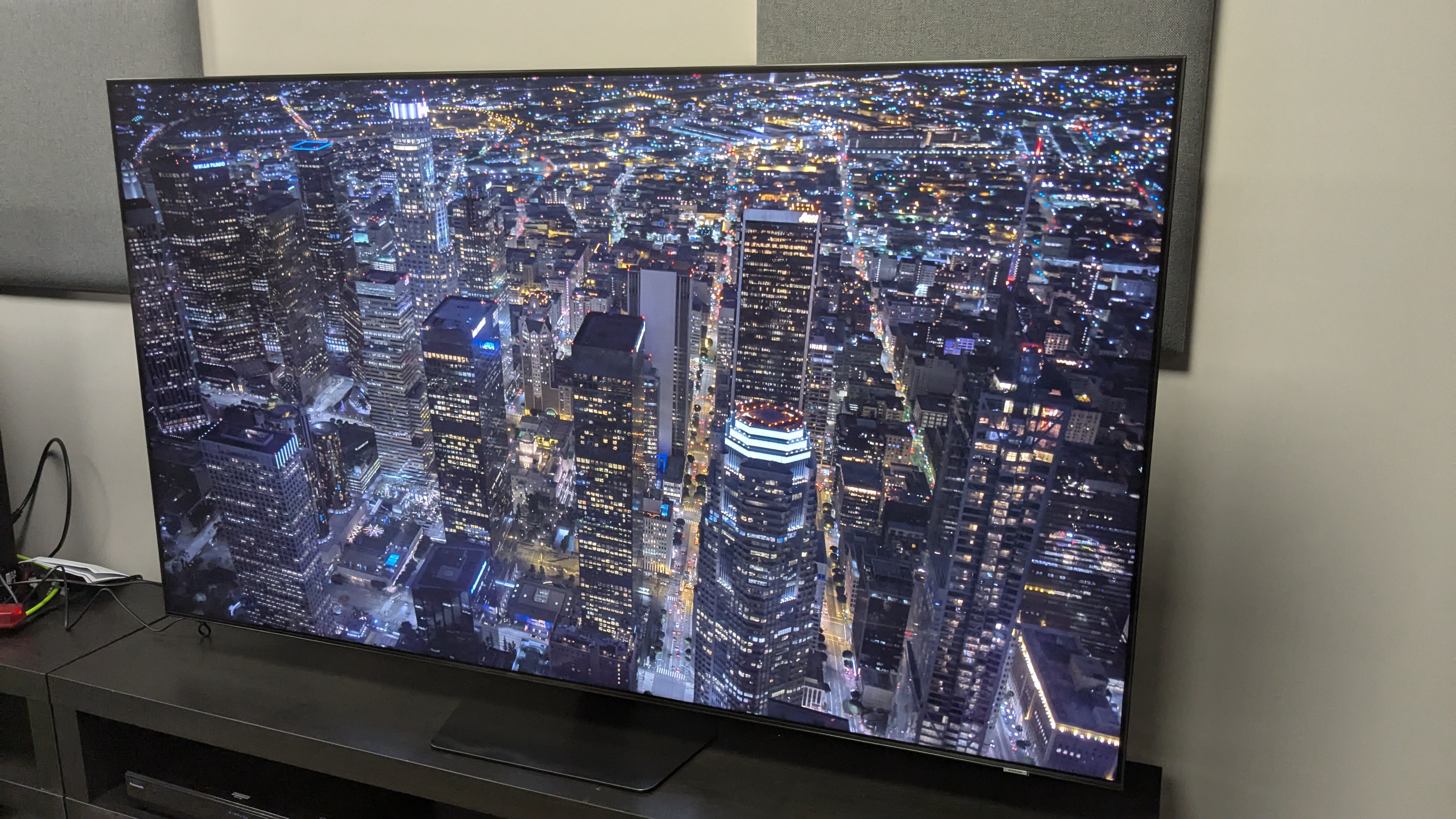
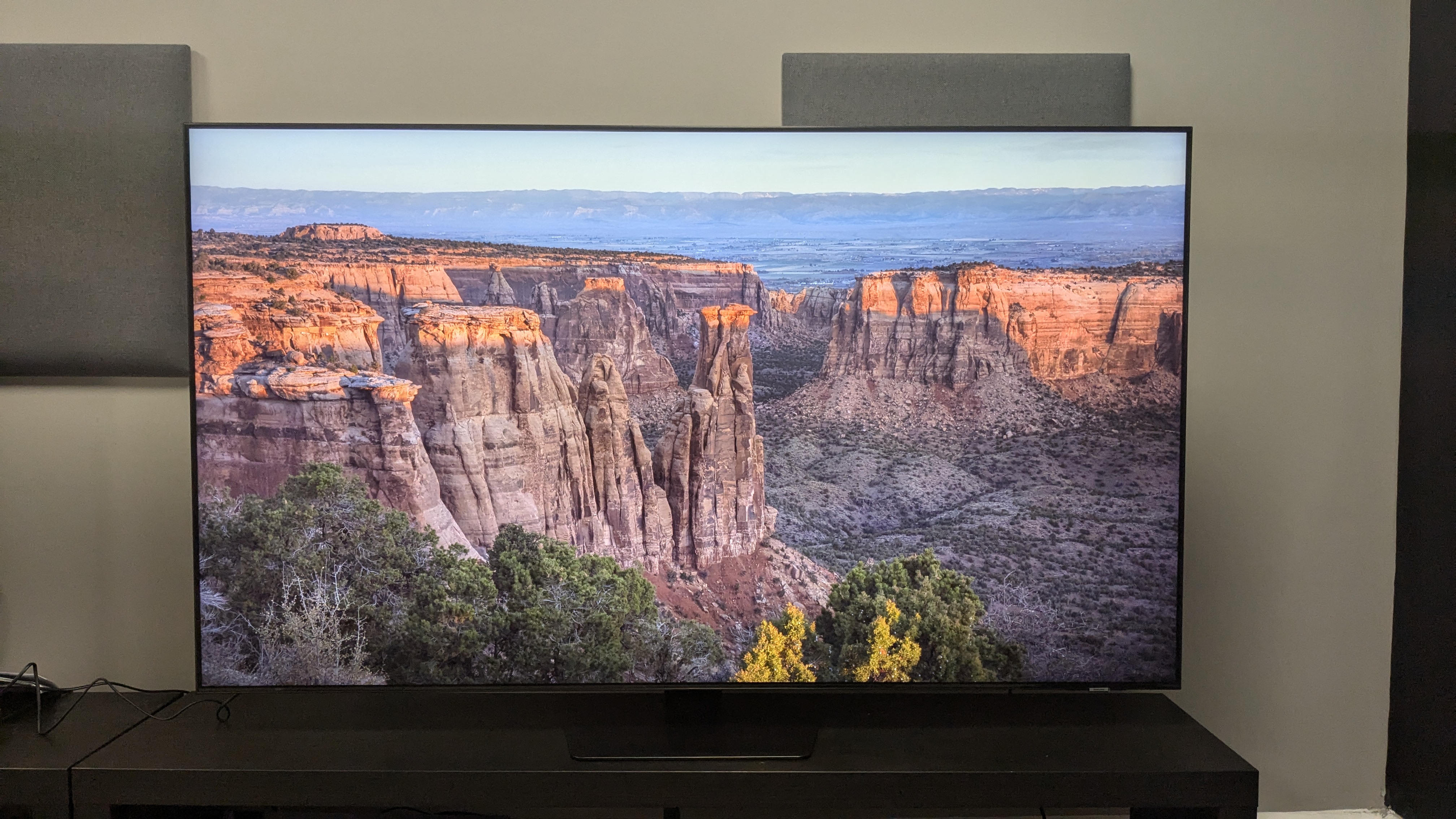
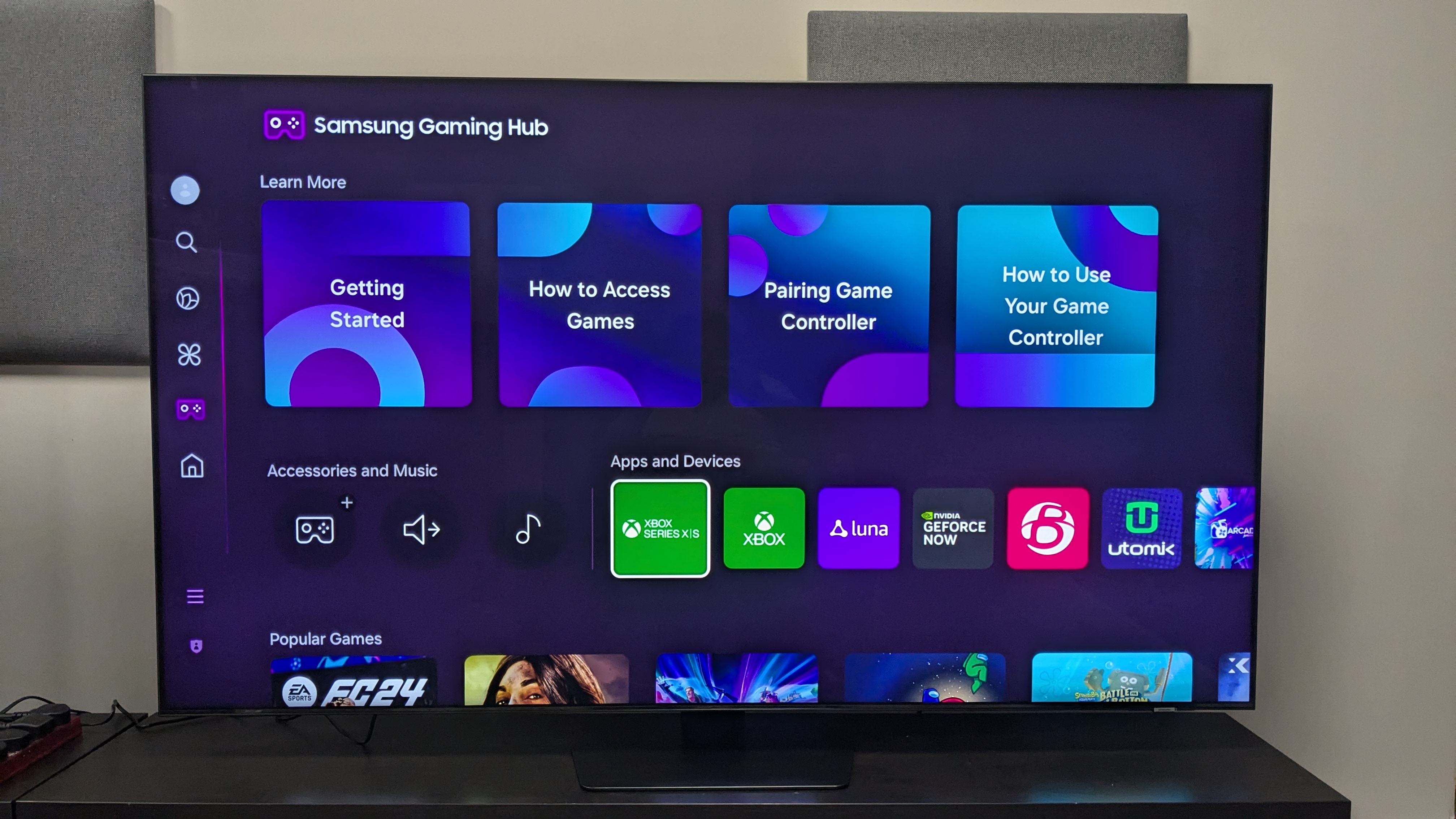
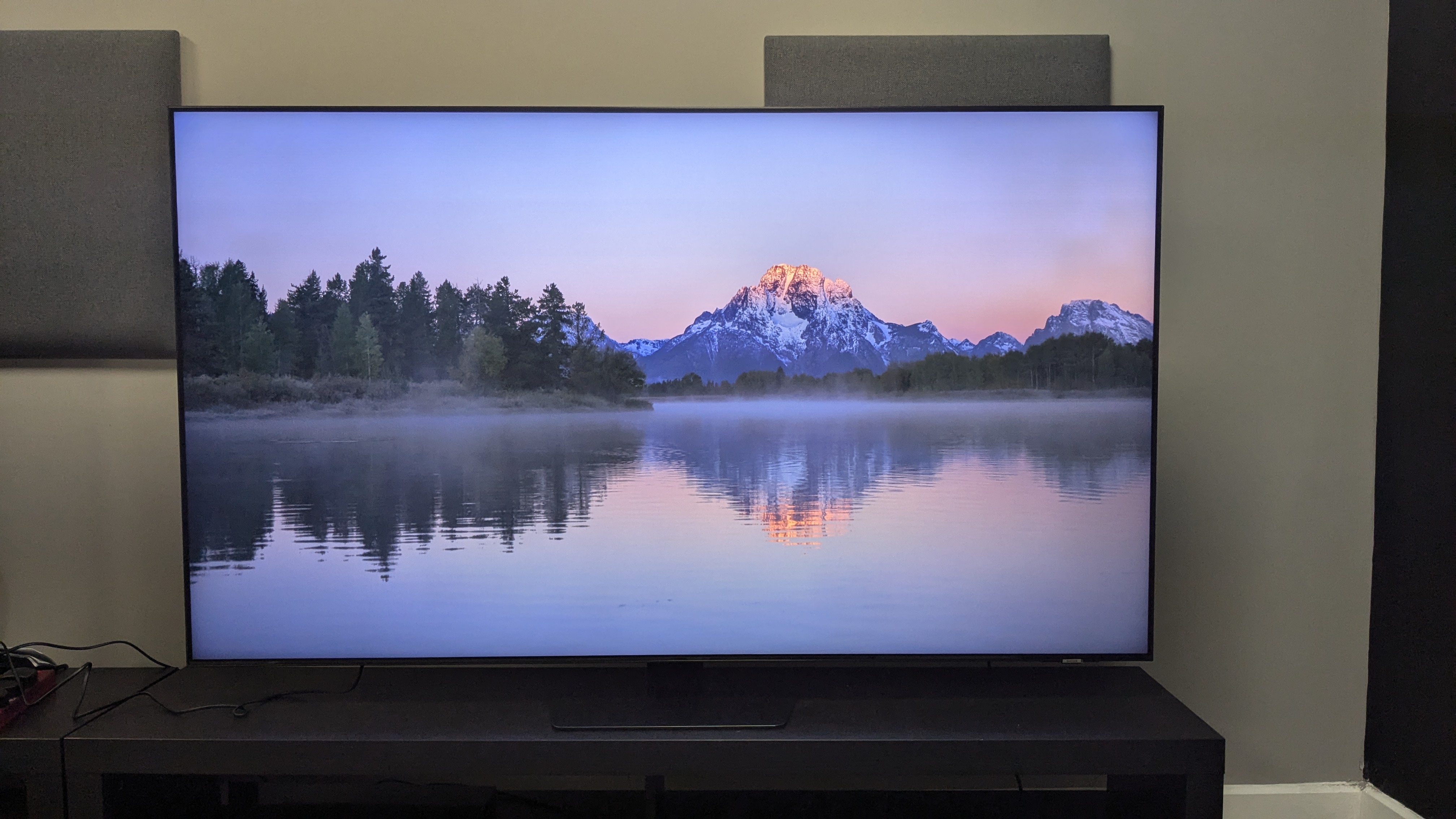
Specifications
Reasons to buy
Reasons to avoid
✅ You want to watch sports in the day: The QN90D has high brightness and excellent motion processing, making it ideal for daytime sports viewing.
✅ You want a great gaming TV: The QN90D is ideal for gaming with 4K 144Hz, VRR and ALLM support on all four HDMI 2.1 ports, as well as a useful gaming hub.
❌ You want the cheapest TV for sport: Of the TVs on this list, the QN90D is one of the most expensive. The Samsung Q80D and Hisense U8N are cheaper alternatives.
❌You want Dolby Vision support: The QN90D supports the HDR10+ HDR format, but not the more widely used Dolby Vision format.
The Samsung QN90D is our top choice when it comes to the best TVs for sport, thanks to its bright, mini-LED panel, consistent full-screen brightness, bold color and superb motion handling. This means your next sports match will look good no matter how bright a day it is at kickoff.
In our review of the QN90D, we were impressed with its motion handling, saying that "handled fast-moving pictures, especially sports, with ease" – and this was even with motion settings such as judder reduction turned off. The QN90D also has high brightness levels. It hit 2,192 peak brightness and 680 nits fullscreen brightness on a 10% window in Standard mode, making it ideal for watching sports in bright rooms. Its anti-reflection screen also really helps.
But, it's not just sports where the QN90D shines. It also demonstrated rich contrast, vibrant color and surprisingly deep black levels when displaying movies too. Detail and textures were the real standout, with the Real Depth Enhancer Pro AI feature giving textures a seriously realistic and authentic appearance.
Gamers will also be pleased with the QN90D. It carries four HDMI 2.1 ports, supports 4K, 144Hz, VRR (AMD FreeSync Premium Pro included) HGiG and ALLM. Samsung's Game Hub is also a useful location for all things gaming. Pair these features with an ultra-low 9.9ms input lag time and vivid picture, and you get a seriously good gaming TV.
While the QN90D does face budget competition from the likes of Hisense and TCL, which carry similar features and picture quality – none can match up to the QN90D's natural motion handling prowess, which is why, despite it's higher price, it's easily the best TV for sport around.
Read our full Samsung QN90D review
The best budget TV for sport in the US
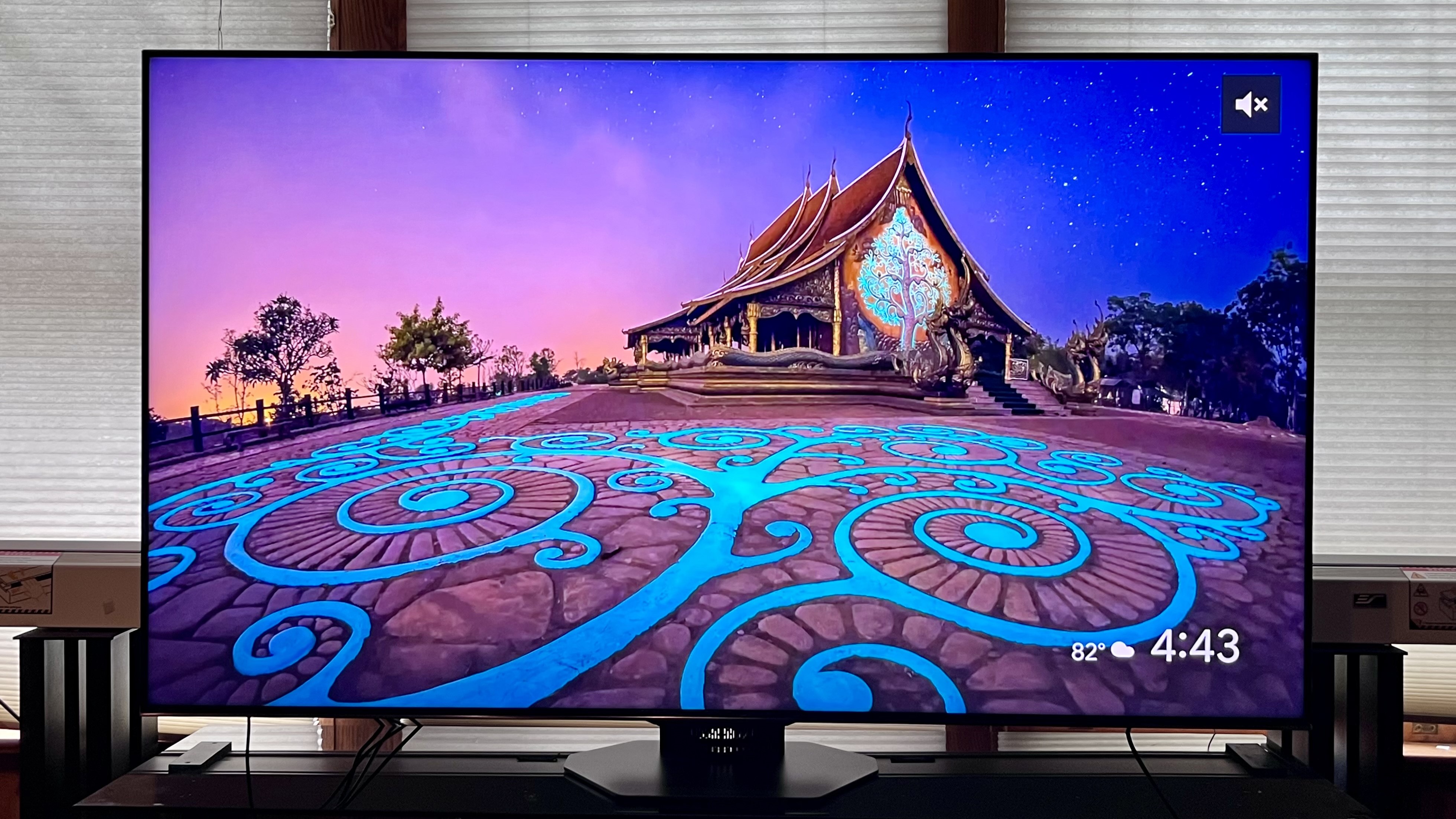
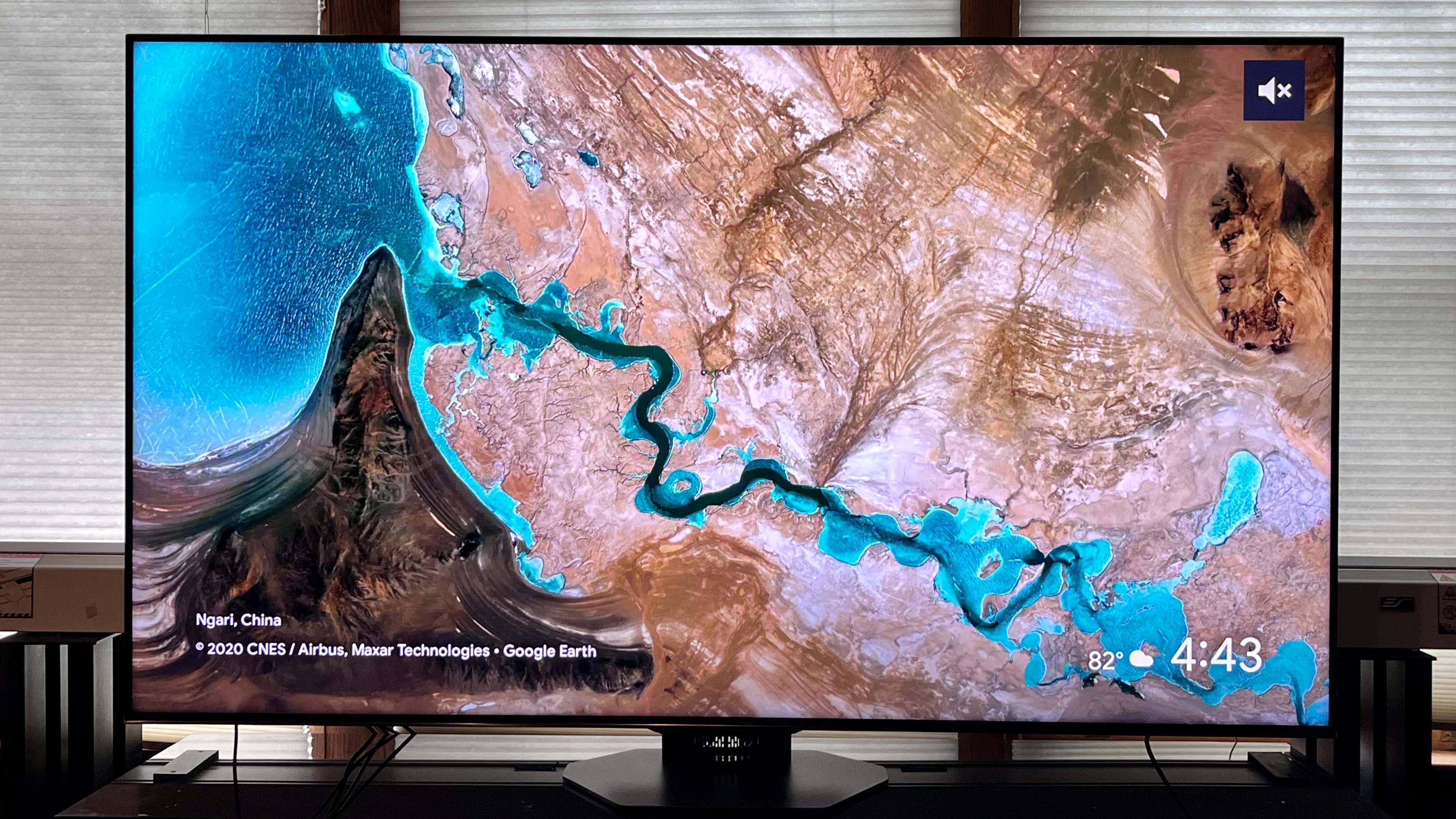
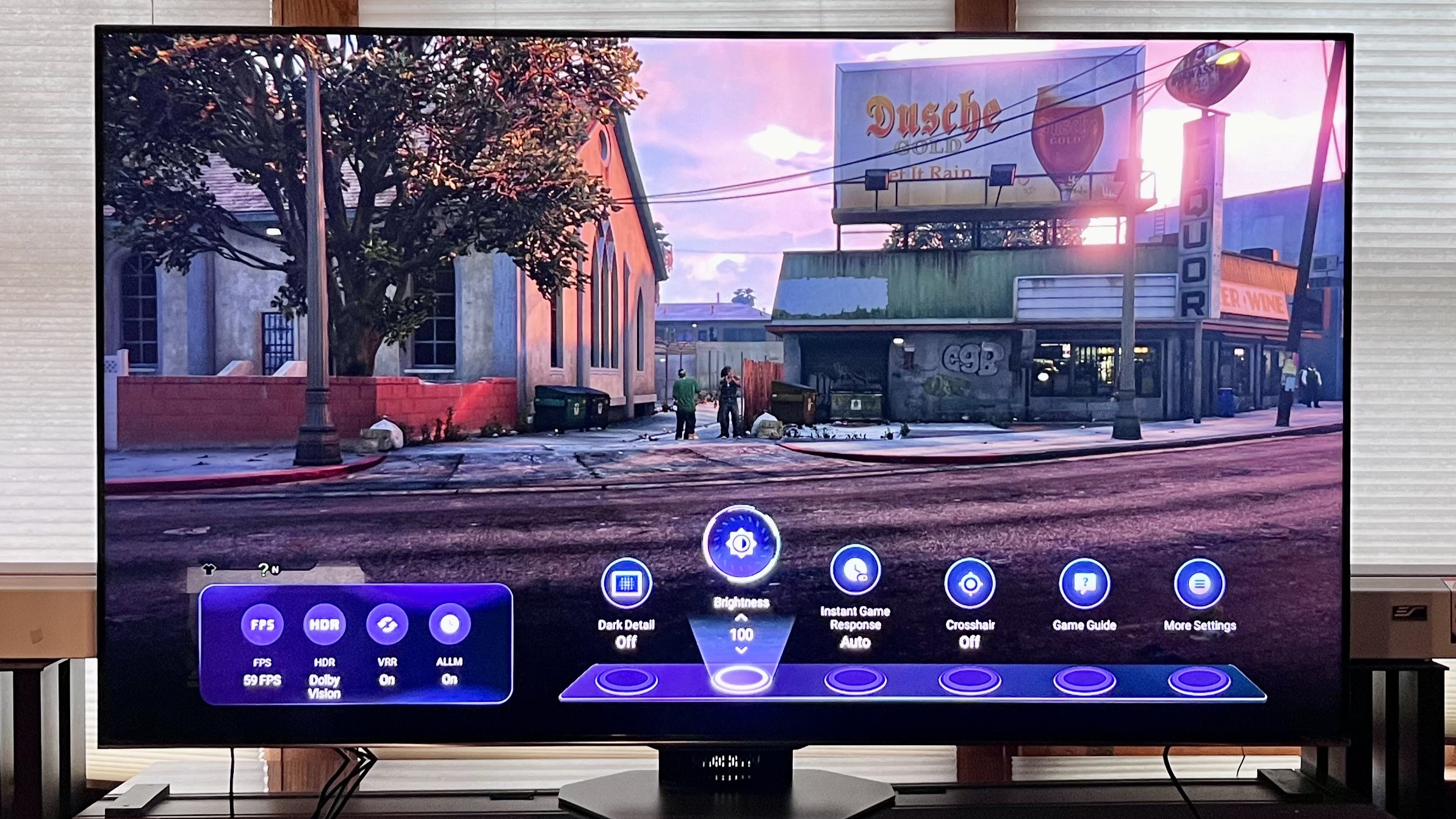
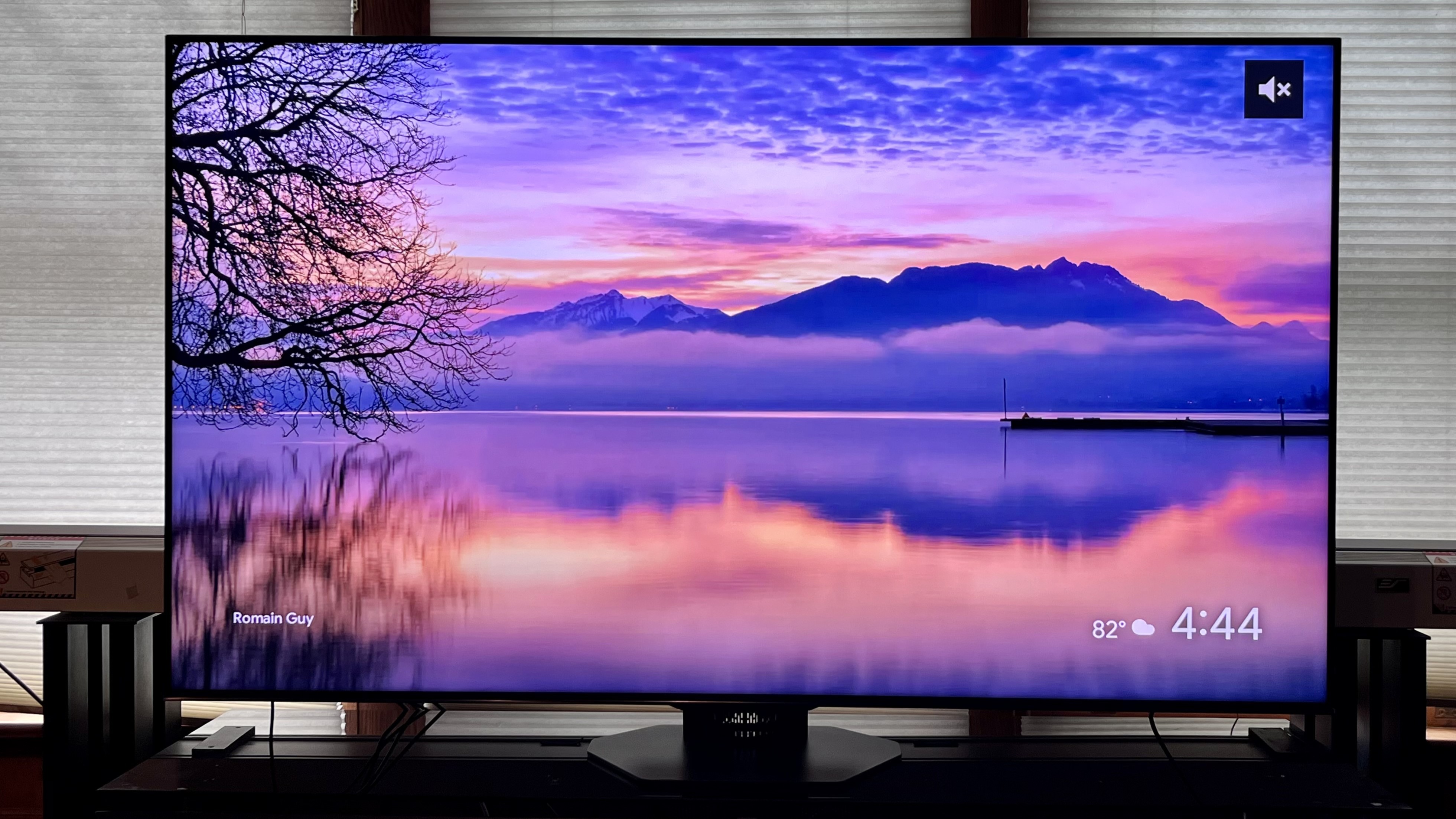
Specifications
Reasons to buy
Reasons to avoid
✅ You want a bright picture: The Hisense U8N delivers exceptionally bright images across all sources, including sports.
✅ You want outstanding value: The U8N delivers great picture quality and gaming performance, all for a price that stands out in a competitive market.
❌ You want to watch in a big group: The U8N's picture contrast fades when its viewed from off-center seats, which isn't great for group viewing.
❌You don't want to mess with picture settings: The U8N requires some tweaking to its picture settings to get the best out of it; even its Filmmaker Mode requires attention.
Hisense U8 series TVs are a great option for sports viewing due to their high brightness and low-reflection screen. Another benefit to the U8 series TVs is their low price in the US (UK prices tend to be higher). For example, you can get the latest version, the Hisense U8N, in a 65-inch screen size for under $1,000, which is a fantastic price for a TV of this quality.
When we tested the U8N, we found it had a significantly brighter picture than last year’s U8K series. This makes it perfect for daytime viewing in a bright room, and when we watched the 2024 Summer Olympics on the U8N, we noted that the “powerful effect of overhead lights beaming on the athletes brought the games to life, while colors in the uniforms looked rich and robust.” The U8N’s impressive local dimming also makes it a great option for movies, with strong contrast and deep, uniform blacks. Motion handling isn’t great out of the box, meaning you’ll need to make some adjustments in its Custom Motion Enhancement sub-menu to get better results when watching sports.
The U8N also has an improved design compared to its predecessor, with a new pedestal-type stand and a fully backlit full-size remote control. Hisense uses Google TV for the U8N’s smart TV interface for streaming in the US, and Hisense’s own VIDAA platform in the UK and Australia. Gaming is also well-supported on the U8N, which features two HDMI 2.1 ports with support for 4K 120Hz, VRR up to 144Hz (including FreeSync Premium Pro), ALLM, and Dolby Vision 4K gaming.
Considering its comparatively low price and high overall level of performance, the Hisense U8N is an obvious choice for sports fans on a budget.
Read our full Hisense U8N review
The best budget TV for sport in the UK
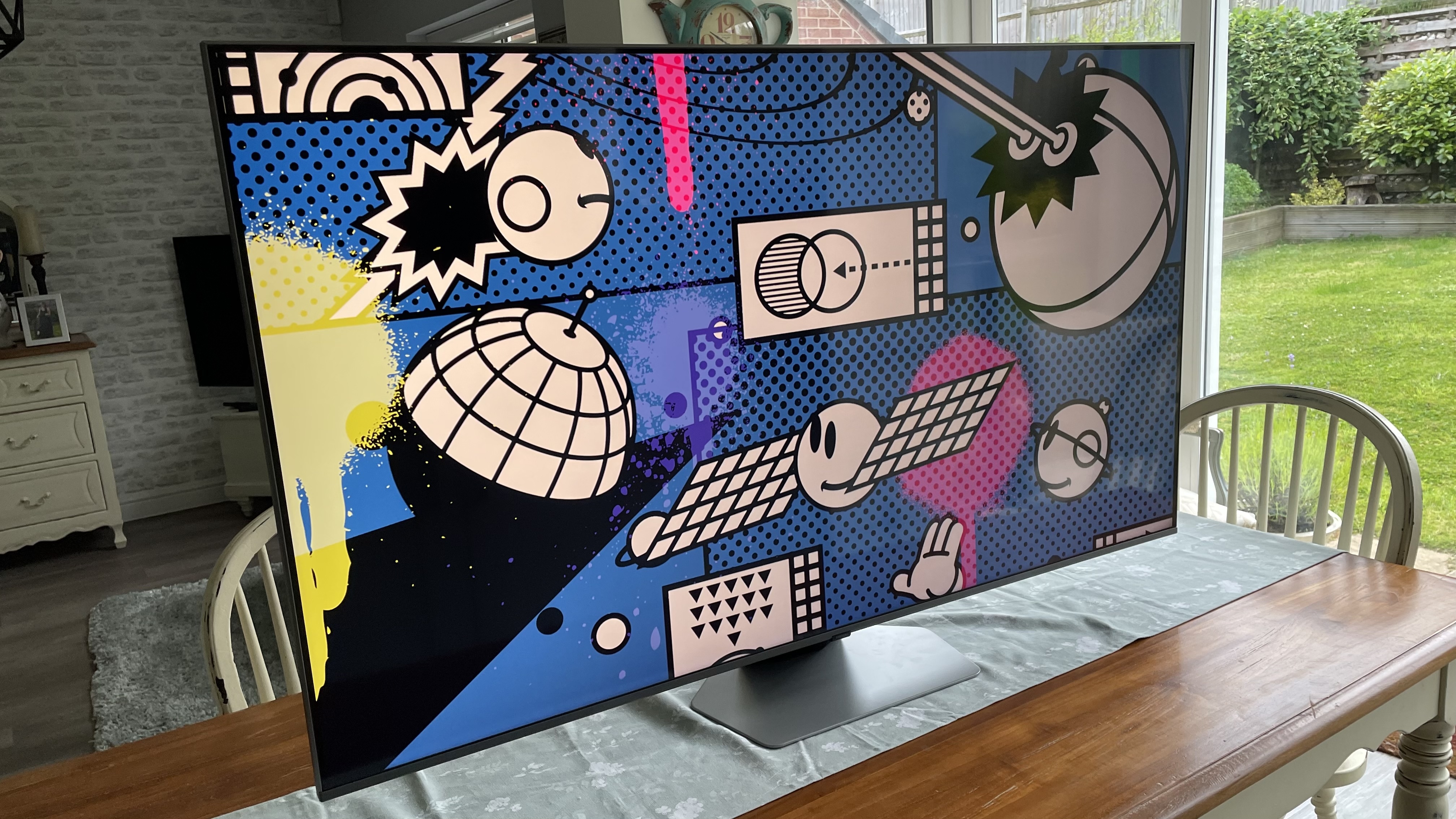
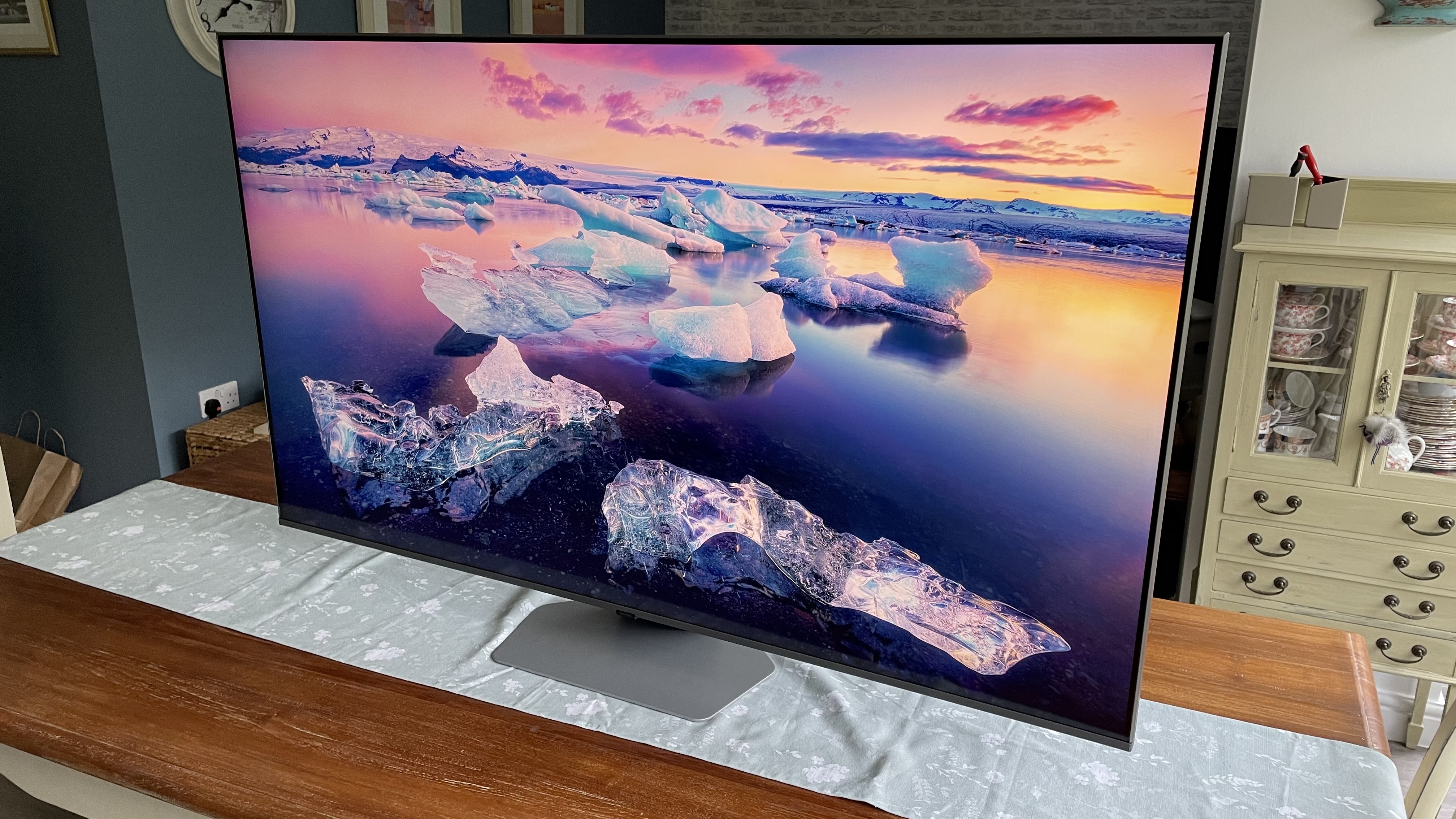
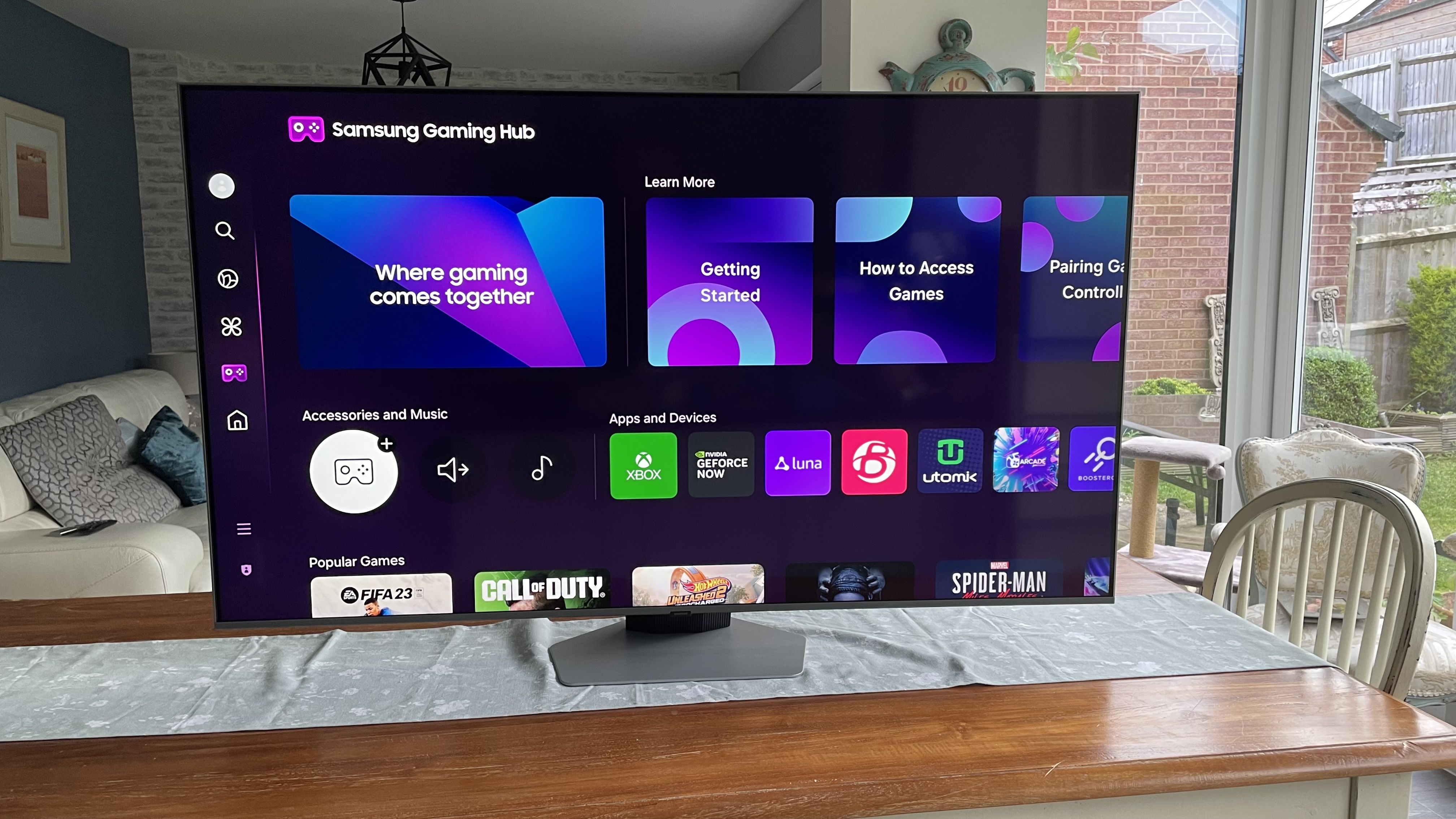
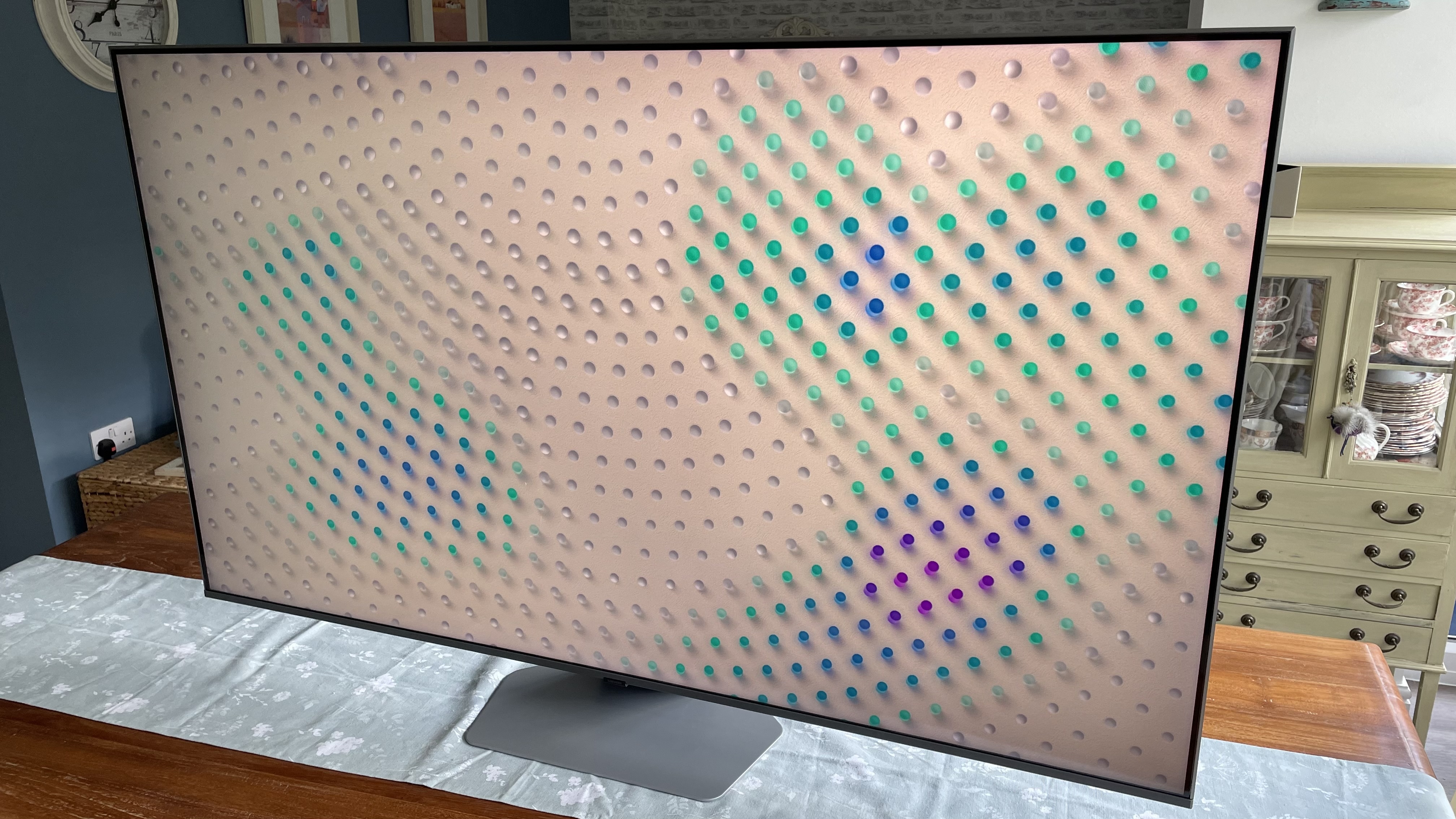
Specifications
Reasons to buy
Reasons to avoid
✅ You want bang for your buck: The Samsung Q80D comes in a range of sizes and offers solid picture quality and gaming features at an affordable price.
✅ You want a solid gaming TV: At this price range, four HDMI 2.1 ports, 4K 120Hz, VRR and cloud gaming support are rare, but the Q80D supplies it all.
❌ You want an accurate picture out of the box: Like the Hisense U8N, the Q80D also requires some picture setup, most notably to optimize its color.
❌You want to watch from an angle: While the Q80D's picture looks better from an angle than some TVs, backlight blooming is still noticeable when viewed off-center.
The Samsung Q80D boasts improved brightness and contrast over the Q80C that came before it in 2023. It also houses the same powerful Neo Quantum 4 Gen 2 processor that's currently used in Samsung's flagship mini-LED TVs, meaning it's a solid cheaper choice if you want a powerful and high-performing TV for sports without a huge price tag.
Not only is the Samsung Q80D a good an choice for sports, it's also a solid option for gaming thanks to its ultra-fast response time, bold and sharp image quality and dedicated gaming features. Another surprising benefit of the Q80D is you don't need to add a soundbar straight away. The built-in sound isn't amazing, but we commented in our review that it delivers a "well-rounded, detailed and dynamic sound".
The Q80D is our top budget pick for sports because it's a solid all-rounder with a stunning picture – especially considering the price. In our review, we wrote: "Contrast, colour and sharpness as good and as consistent as you get with the Q80D are rare indeed in the mid-range TV world." However, we also noted that you'll need to tinker with the picture settings to make the most of the Q80D, which we'd highly recommend if you're using it to watch sports.
Whatever your room size, the Q80D ranges from 50-inches to a large 98-inches. Which means whatever the size of your group for the big game, the Q80D has you covered. You won't find the futuristic slim aesthetic of Samsung's high-end TVs here, but the Q80D boasts good build quality that gives it a premium look and feel.
Read our full Samsung Q80D review
The best premium TV for sports
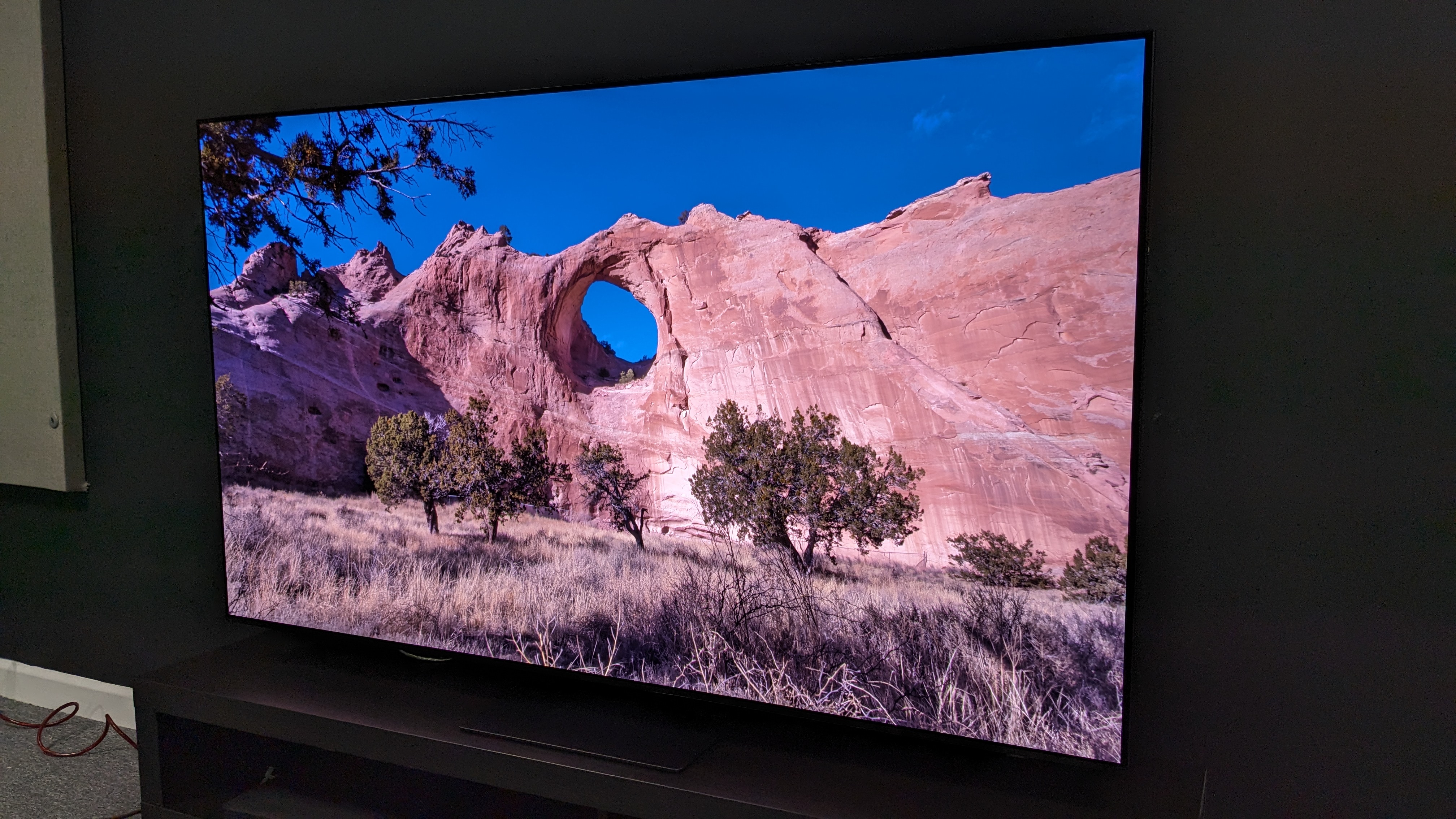
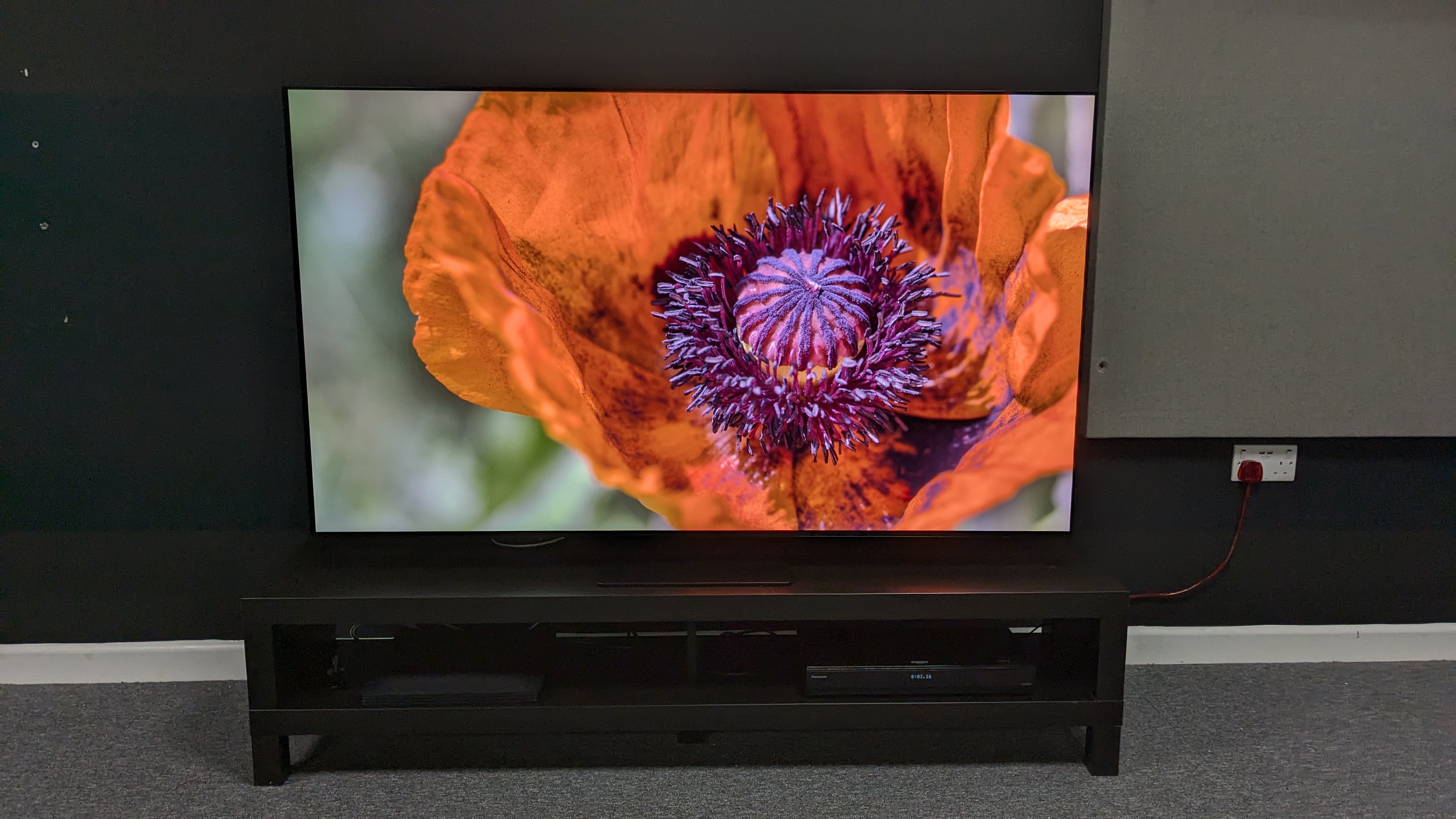
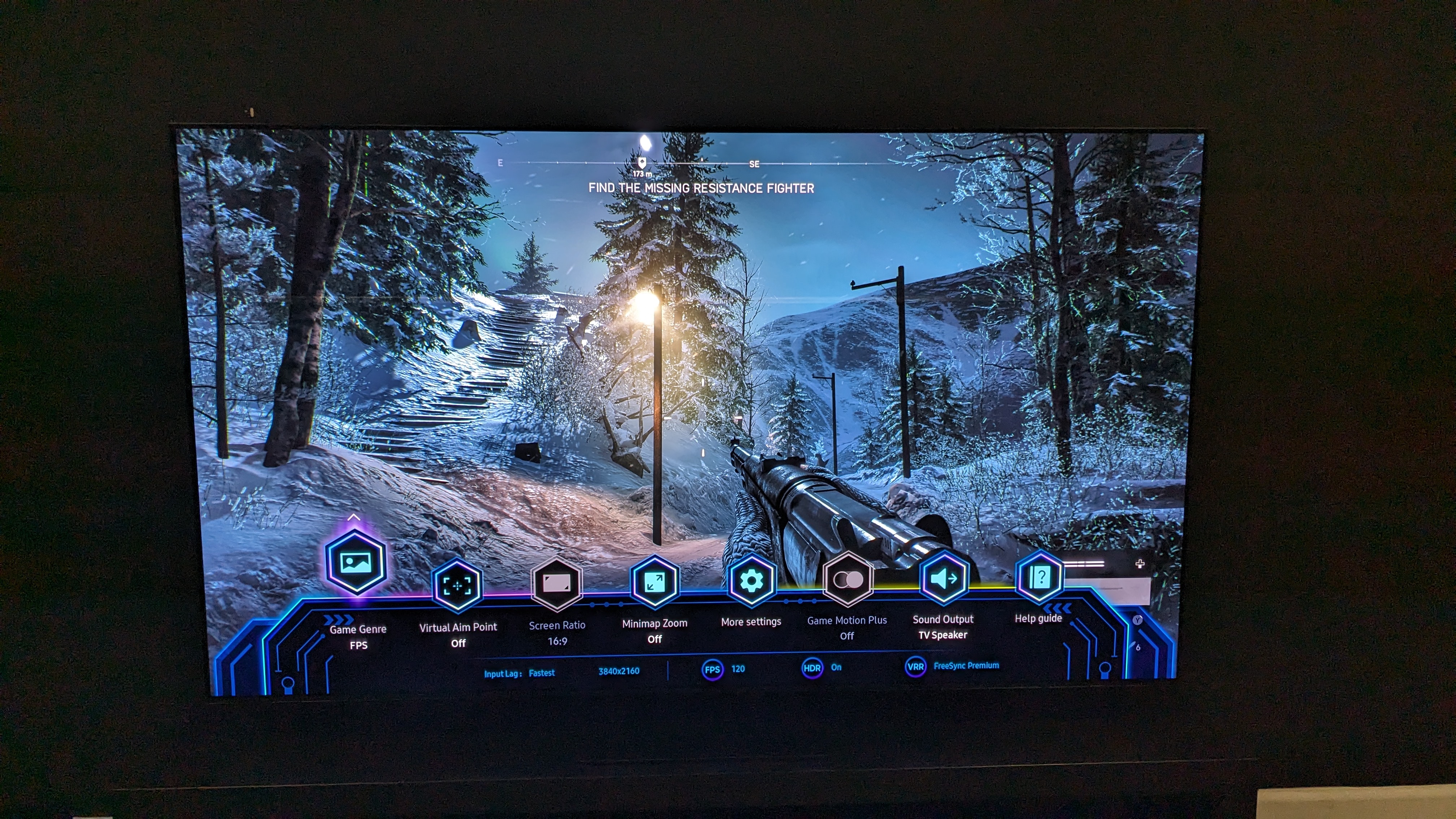
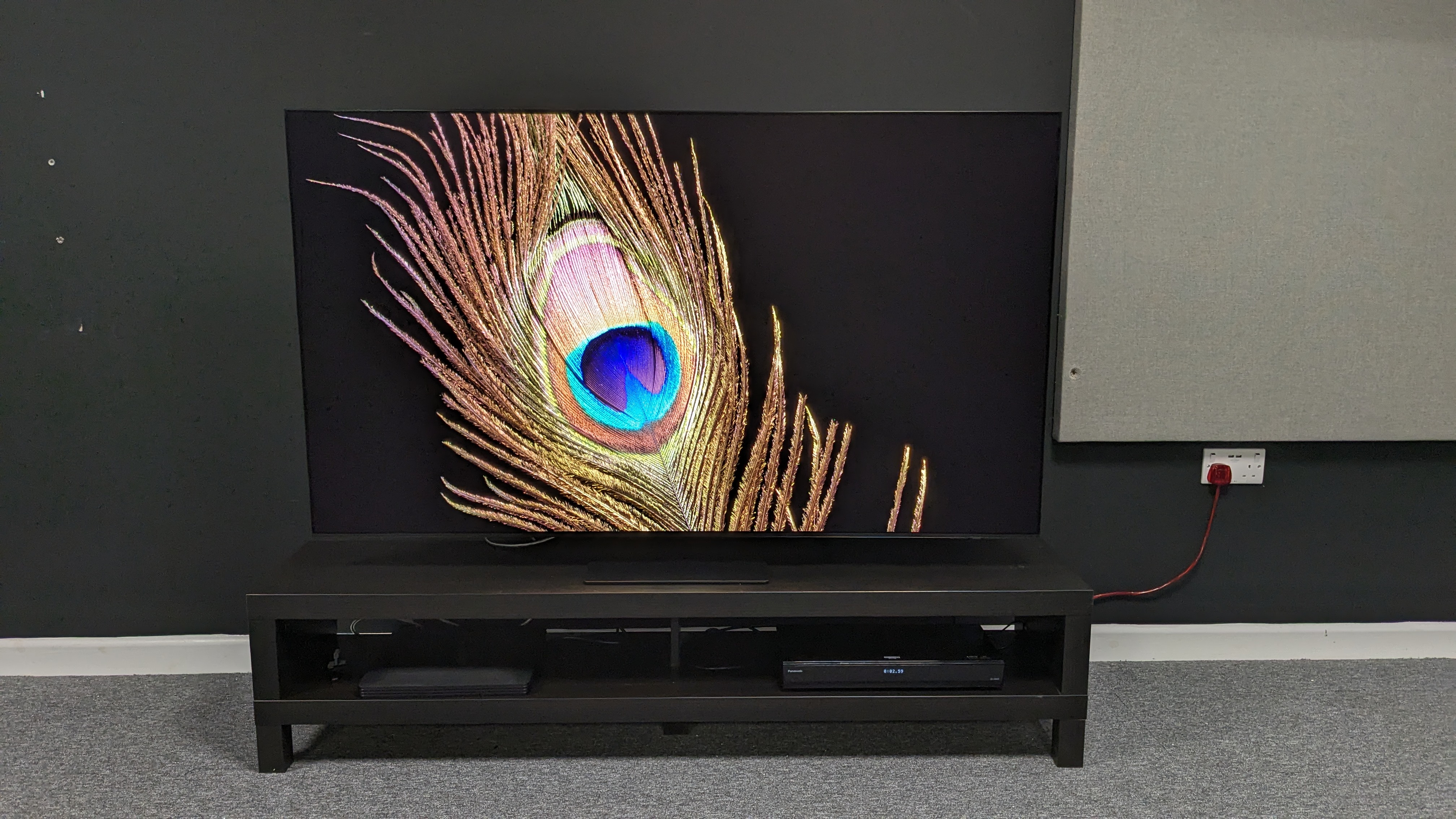
Specifications
Reasons to buy
Reasons to avoid
✅ You want elite pictures for your sport: The S95D delivers contrast-rich, bright and accurate images for whatever you're watching, including sports.
✅ You plan to watch in bright rooms: The S95D's OLED Glare Free screen is excellent at repelling reflections, so watching in bright rooms is no issue.
❌ You're on a budget: A premium TV that delivers premium performance, the S95D is the most expensive TV on this list.
❌You want an accurate Filmmaker Mode: The S95D's Filmmaker Mode suffers from black crush that can only be reduced by adjusting picture settings.
Watching daytime sport on OLED TVs has often been difficult due to their limited brightness levels when compared to mini-LED and even some LED TVs, meaning they're not the best TV option if you're a sport fan. But, one OLED TV is here to change that – the Samsung S95D.
The Samsung S95D delivers excellent pictures, headlined by its exceptional detail and realistic rendering of textures. It also carries high brightness levels, but it's Samsung's OLED Glare Free tech, which all but eliminates distracting screen reflections from light sources, that makes the S95D a winner for sports viewing.
The S95D also has smooth motion handling, which is not just ideal for sport, but gaming as well. It's stacked with gaming features across its four HDMI 2.1 ports, including 144Hz refresh rate, VRR, ALLM and a lot more, making it perfect for sports fans who want to dive into a gaming session afterward.
The S95D also has a stylish and sleek design, with a trim profile and 'floating' appearance (thanks to a clever stand design). And its ultra-thin bezel makes the picture on the screen the priority.
While it isn't top of our list – mainly because the Samsung QN90C delivers higher brightness levels and top-notch motion handling for a fraction of the price – the Samsung S95D is still a phenomenal choice for sports fans who want to watch on an OLED screen.
Read our full Samsung S95D review
The best OLED TV for sports in varying sizes
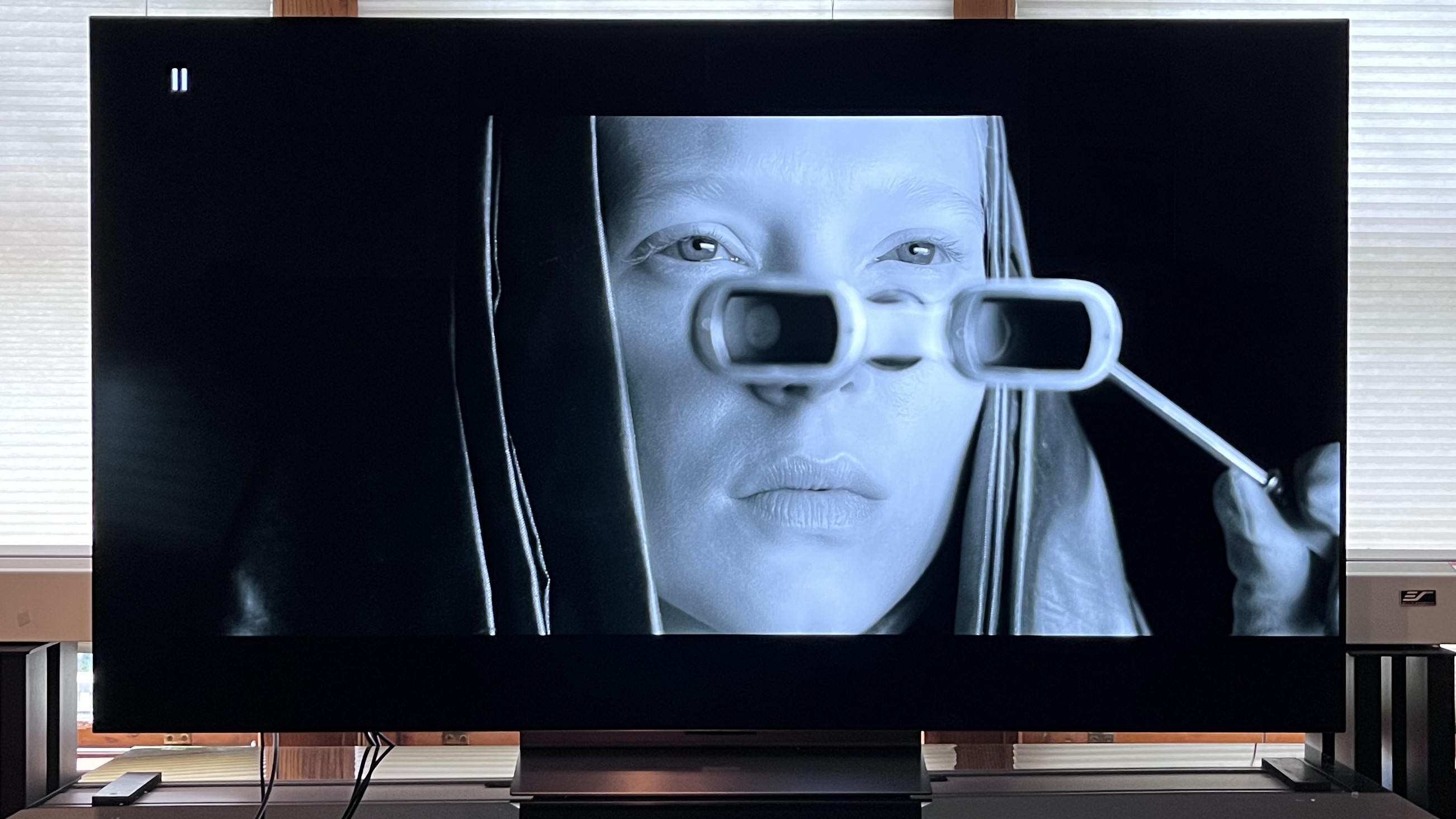
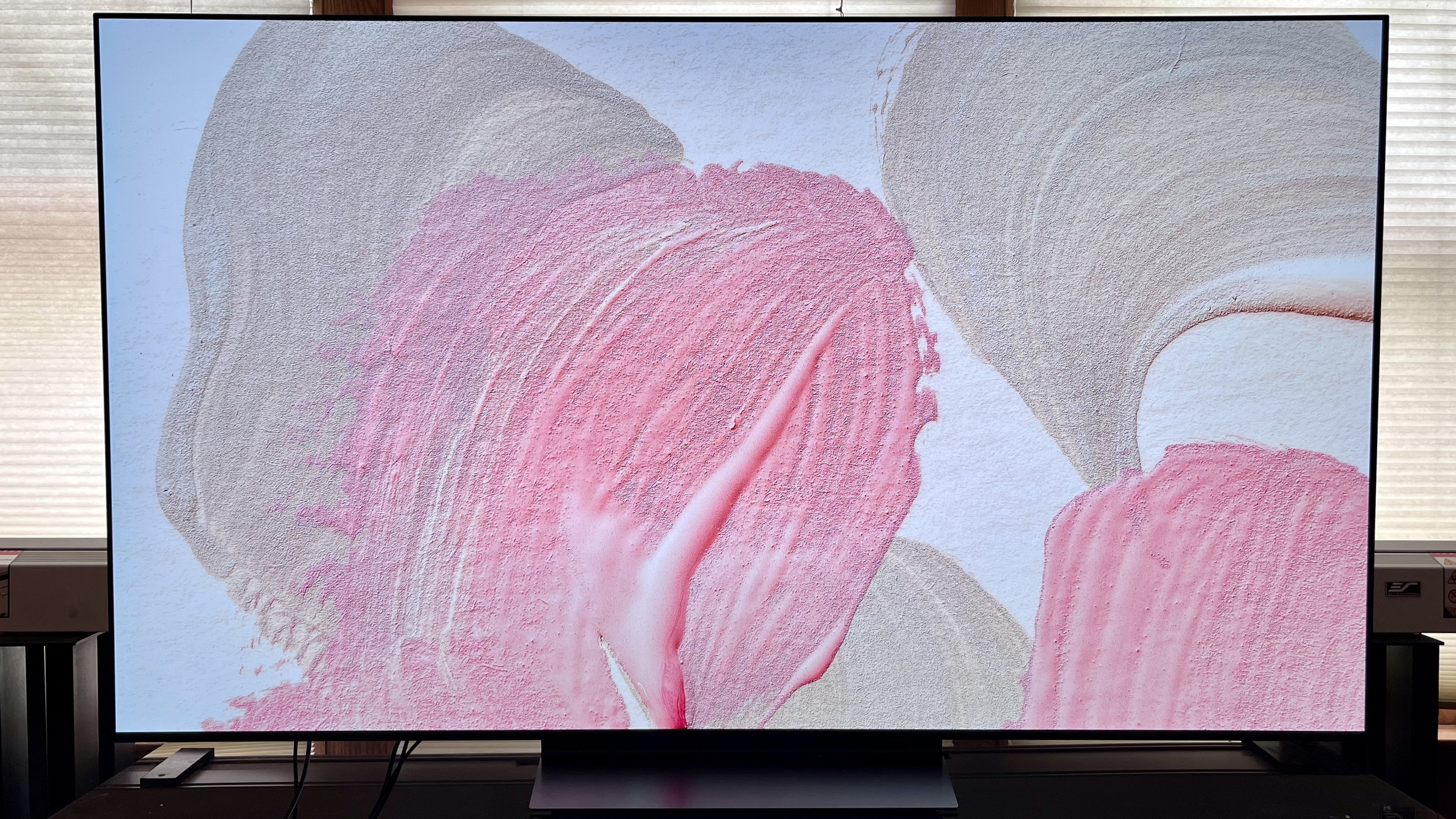
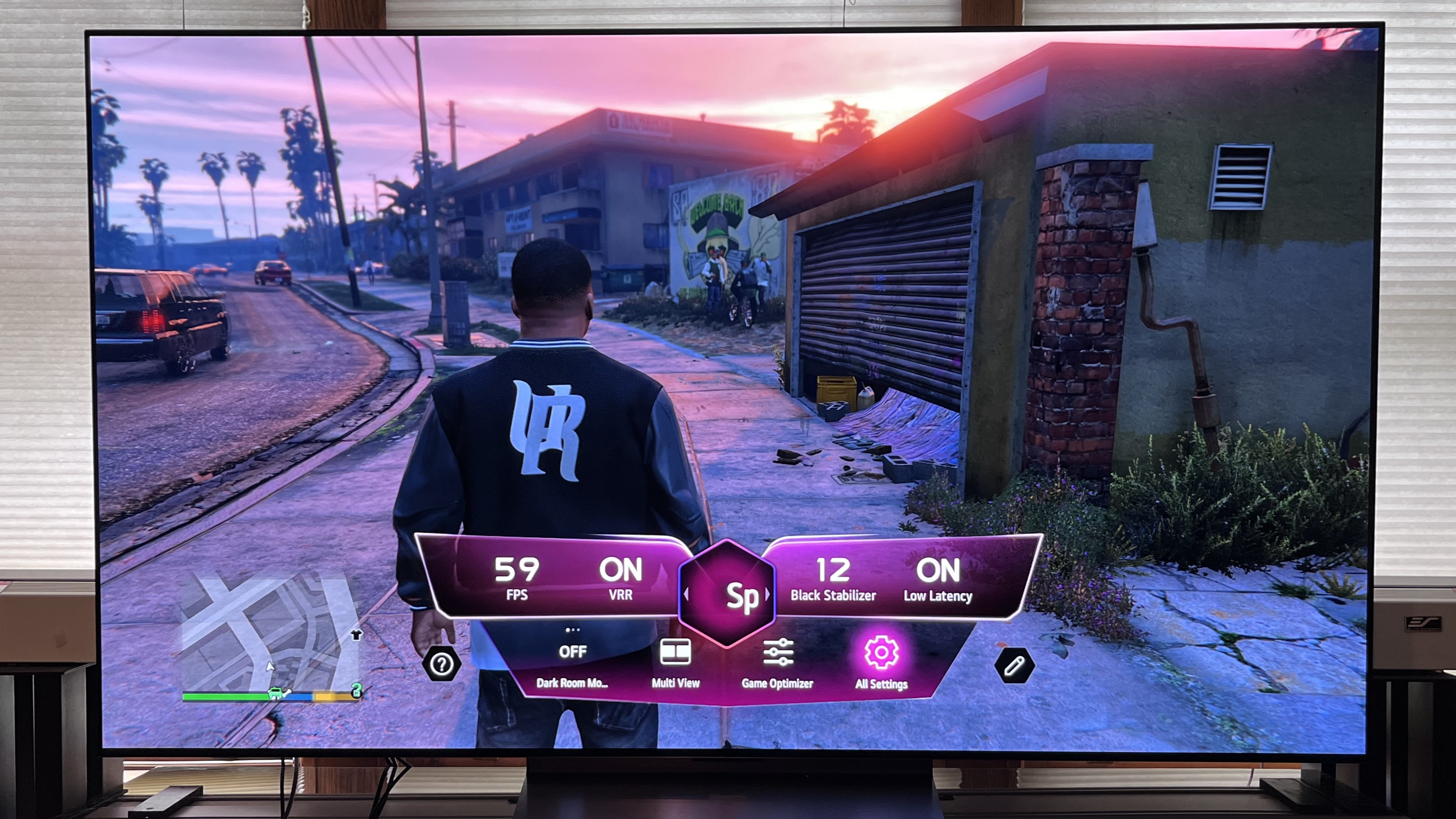
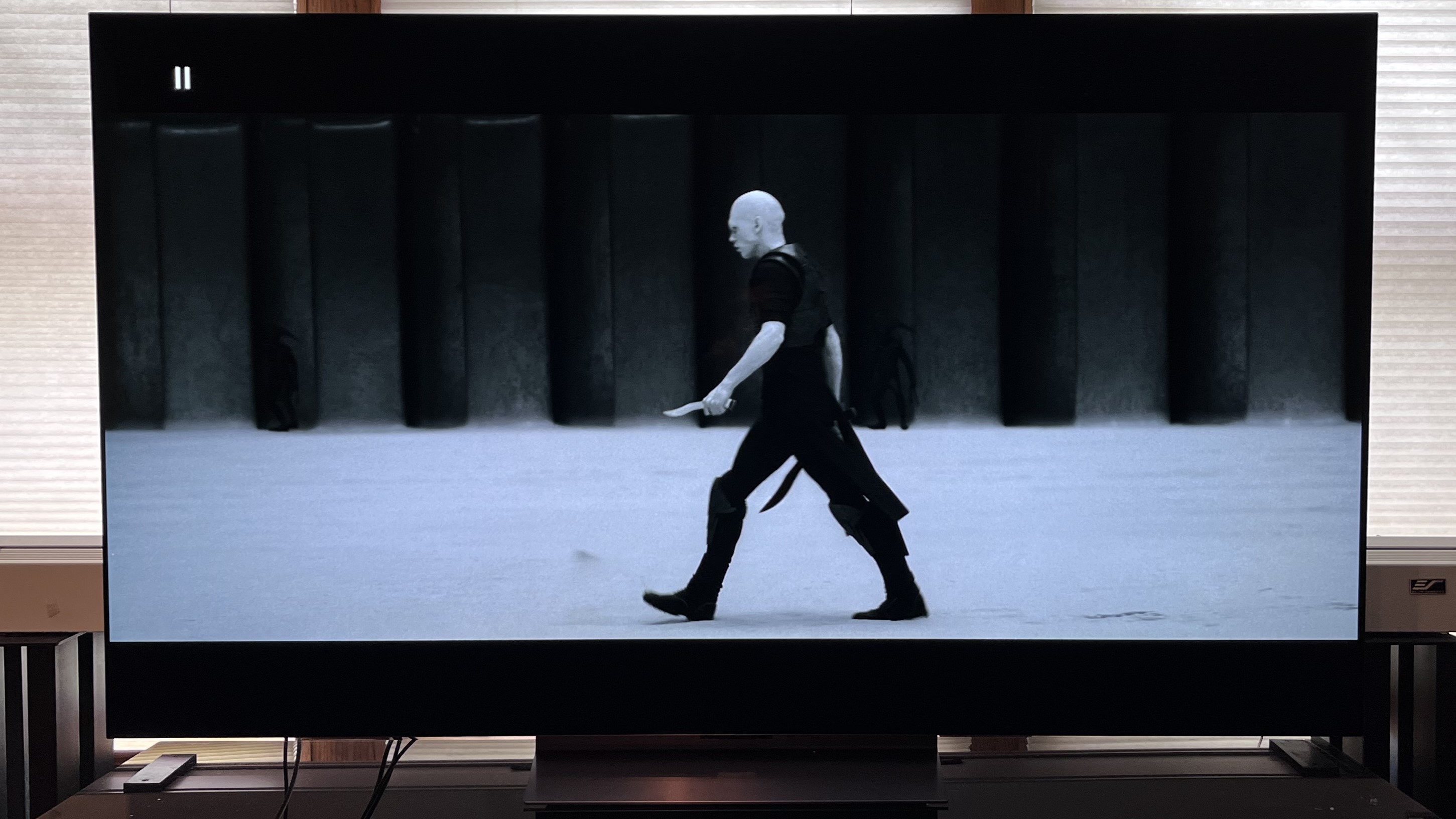
Specifications
Reasons to buy
Reasons to avoid
✅ You want a TV that covers all the bases: The LG C4 is brilliant for sports, movies and gaming thanks to its wide range of features and superb performance.
✅ You want a wide range of sizes: The C4 comes in sizes ranging from 42-83 inches, making it suitable for rooms of any size.
❌ You want the brightest TV for sports: While the C4 has decent brightness for an OLED TV, it's not as bright as other sets on this list, even the cheaper Hisense U8N.
❌You want the best built-in sound for sports: The C4's built-in sound is average and doesn't match the quality of its picture; we'd add a soundbar.
Not every sports fan is after a giant screen TV. Most of the TVs in this list come in different sizes, but the LG C4 is the best for a wide range. From the smallest 42-inch display that's a solid choice for smaller homes through to the largest 83-inches, the LG C4 has a size for all rooms big or small.
Picture has always been a highlight on LG's OLED TVs and the C4 is no exception. It boasts a fantastic picture, as well as contrast and detail that we described as "excellent" in our review. Thanks to LG’s new Alpha 9 AI Gen7 processor, it has a feature called Brightness Booster. This delivers a significant brightness advantage over last year's LG C3. Like other OLED TVs, it has a wide viewing angle, which makes it ideal for sports. There's also an anti-glare coating, which is capable of filtering out reflections from room light, meaning you can catch up on the big game whatever time of day or night you're watching.
Like many other TVs in this list, because the LG C4 is a top pick for sports, many of the same features make it a good choice for gaming, too. This includes four HDMI 2.1 ports that provide 4K 120Hz pass-through along with VRR, ALLM, and Quick Media Switching. It's also 144Hz-certified by Nvidia, ideal for PC and Xbox Series X and PlayStation 5 console gaming.
It's not a perfect TV, it's sound quality is average and you'll need a soundbar to make the most of it. It's also lacking HDR10+ support and there are brighter options in this guide. But if you want a great quality OLED TV for sports in a choice of sizes, the C4 is your best option. And while it's not cheap, it's reasonably priced. In our review, we wrote: "LG C4 is priced less than flagship OLED TVs while providing premium features and performance."
Save on electronics with our LG coupon codes. Find top deals on LG TVs, appliances, and more to enhance your home tech.
Read our full LG C4 OLED TV review
The best TVs for sport: FAQs
How do you choose the best TV for sports?
There are a number of factors to consider when you're looking for the best TV for sports.
The first is the picture quality on offer. All TVs need a decent picture, but it's paramount if you're going to be watching sports as detail, clarity and brightness could make all the difference as to whether you see a football, tennis ball or car whizz across your screen or not.
On that point, motion handling is also vital. You need to be sure the TV you're considering handles moving objects well. This will make the TV a solid choice for both gaming and sport. Looking out for the refresh rate as a good indicator here. Many TVs these days have a 60Hz or 120Hz refresh rate, 120Hz tends to be better, but a range of factors determine motion handling performance.
Will you be using a soundbar? If not, you'll need to make sure the TV has decent audio performance, too. You may not think sound is as important as what you can see in sports, but it can be vital and adds to the atmosphere, too.
Considering where you'll be putting the TV is important too. You'll need to ensure you not only have enough space to hang it on a wall or place it on a shelf, but that you'll have room to view it from a good distance, too. This is especially important if you plan on having people over to watch the big game. Many manufacturers recommend sitting between 1.5 and 2.5 times the TV's diagonal screen size to find your perfect viewing spot.
What should you look for in a sports-centric TV?
If you’re buying a TV and you know you'll be watching a lot of sport, there are a few key things to consider. For starters, there are many different aspects of picture performance to bear in mind, including detail retrieval, color fidelity, and edge definition. Of course, these are all the hallmarks of a good TV, but a great TV for sport needs some extras.
We’d expect slow camera pans to follow faster movement, abrupt changes of direction, movement in the opposite direction the way the camera is moving, and great big swathes of uniform color with smaller elements of different color in constant motion. You get the idea. The way a TV handles motion is extremely important.
How efficient a TV is at handling motion comes down to how well it implements different refresh rates. You don’t need to get caught up in the technicalities here, but it’s worth considering that UK broadcasts are almost always at 50Hz (or 50fps).
This means there are 50 images broadcast per second, which is what makes still pictures look like they’re moving. Therefore, how well a TV can handle this rate of transmission will determine how smooth and convincing the on-screen motion is going to look.
Bear in mind that there isn’t a TV out there with a refresh rate of less than 50Hz. So in theory, one TV should be very much like another when it comes to taking those 50 images per second from the broadcaster and delivering them at a rate of 50 per second on the screen.
How we test
How we tested the best TVs for sport
☑️ More than 2,600 TV and home theater reviews
☑️ 16 years of product testing
☑️ Over 16,000 products reviewed in total
☑️ Nearly 200,000 hours testing tech
When we tested the best TVs for sport, we had a few key things on our 'must-have' list to determine which displays were included.
The first is picture quality. Not all of the best TVs for sport need to be premium displays. But the detail, clarity and brightness on offer needs to be good – otherwise you're not going to see the athletics, football or racing play out in a satisfying way. We tested the TVs in a range of environments and at different times of day to ensure that all of the picture quality specs matched up in the real world.
Next up, motion. If you're watching sport, on-screen images are constantly moving so you need a TV that handles motion well and doesn't make every player or ball or car look like a blur. We tested each of the TVs in our guide above with a range of content to make sure motion handling was top notch.
Most people pair their TVs with soundbars nowadays, but we did want to listen out for a solid audio performance, just in case you do want to use your TV straight out of the box.
We also took into account a range of considerations we always need to see in any TV we recommend, like a decent user experience for setting up the TV, all major smart apps that work well and any added features that make the TV truly shine.
We've tested a huge range of TVs over the years, so we know what separates a decent performance from a fantastic one. We bring this breadth of knowledge to every guide we write so you know you're not getting a copy and paste of the specs here, you're getting hands-on experience informed by years of reviewing insights.
Latest updates to this guide
January 7, 2025
Added in buy it if boxes stating reasons to buy and avoid for each entry on this list. Added in a gallery of 4 images for each entry on this list.
December 11, 2024
Replaced the Hisense U8K with the Hisense U8N, a newer model with superior brightness and better gaming features, as 'Best budget (US)' option.
October 14, 2024
Replaced the Samsung QN90C with the Samsung QN90D as the 'best TV for sport for most people' due to the latter's brighter fullscreen picture, better motion handling and better stock of all sizes.
August 9, 2024
Replaced Samsung Q80C with Samsung Q80D as 'Best budget (UK)' due to the latter's brighter picture and improved contrast. Replaced LG C3 with LG C4 as 'Best OLED TV for sizes' for similar reasons.
May 28, 2024
Replaced Samsung S95C with Samsung S95D as 'Best premium' due to the latter's built-in anti-reflection tech which is ideal for daytime sport viewing.
February 1, 2024
Removed older entries such as the LG C2, Sony X90J, Samsung Q80B and more due to stock levels. Moved Samsung QN90C to 'best overall'. Introduced Hisense U8K as 'best budget US', Samsung Q80C as 'best budget UK', 'Samsung S95C as 'best premium' and LG C3 'as 'best OLED for sizes'. Added this 'latest updates' section.
Sign up for breaking news, reviews, opinion, top tech deals, and more.

Matt is TechRadar's Managing Editor for Entertainment, meaning he's in charge of persuading our team of writers and reviewers to watch the latest TV shows and movies on gorgeous TVs and listen to fantastic speakers and headphones. It's a tough task, as you can imagine. Matt has over a decade of experience in tech publishing, and previously ran the TV & audio coverage for our colleagues at T3.com, and before that he edited T3 magazine. During his career, he's also contributed to places as varied as Creative Bloq, PC Gamer, PetsRadar, MacLife, and Edge. TV and movie nerdism is his speciality, and he goes to the cinema three times a week. He's always happy to explain the virtues of Dolby Vision over a drink, but he might need to use props, like he's explaining the offside rule.
- Al GriffinSenior Editor Home Entertainment, US
- James DavidsonTV Hardware Staff Writer, Home Entertainment